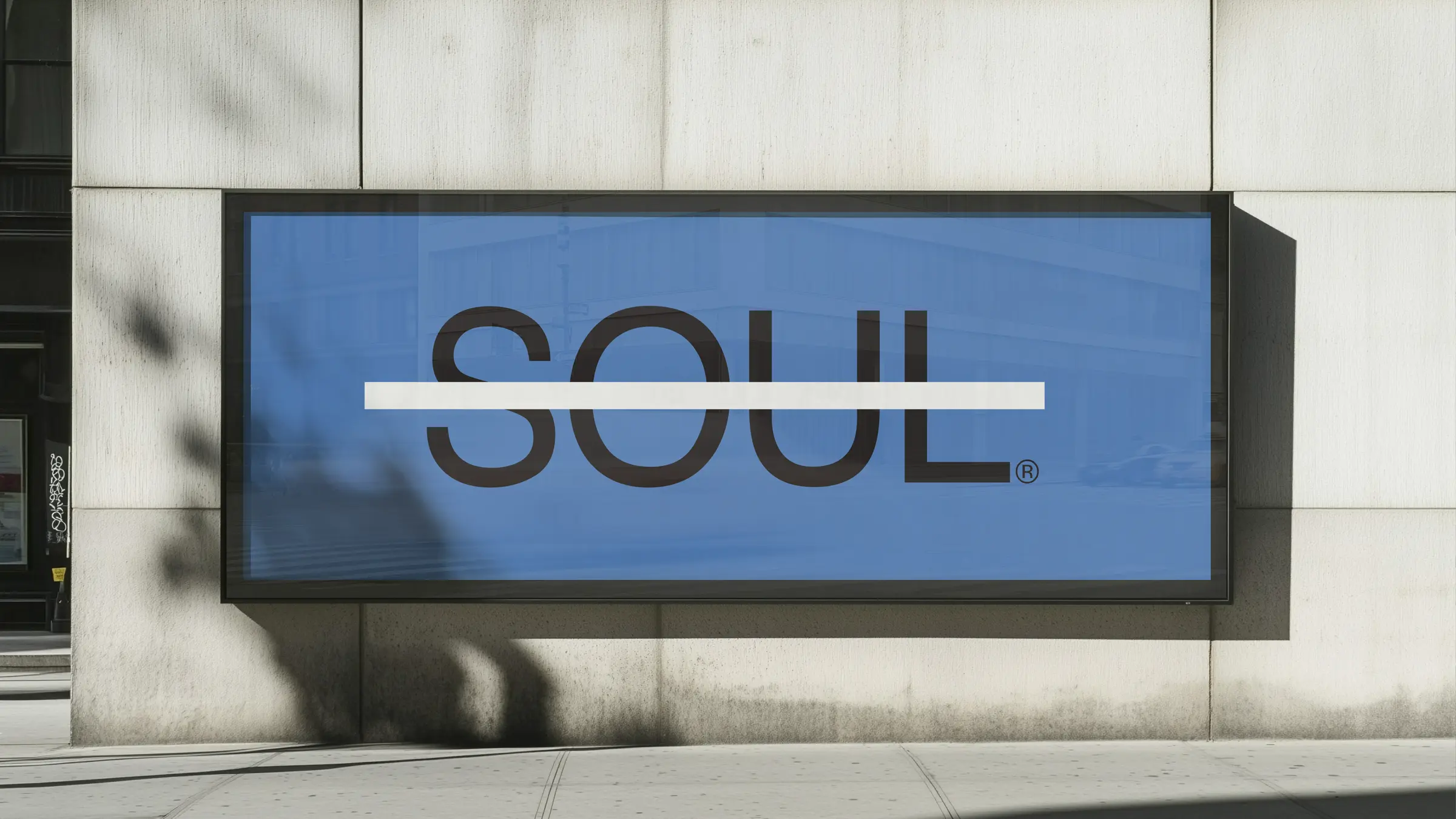How to Rebrand Without Losing the Soul of Your Company
If there’s one thing I’ve learned from working with hundreds of brands over the last 25 years, it’s this:
Branding is personal.
Brand is reputation. It’s a reflection of self. It’s the founder’s vision. Their baby.
It’s business, of course, but it’s usually ego-driven.
So when it comes time to rebrand or reposition your brand, you’re going to take it personally.
Repositioning a brand isn’t just new language or new visuals—it’s deciding what to move forward with and what to let go.
The letting go can be the hard part.
Why do you reposition a brand?
Brands usually reposition when things change. Often, that’s during a leadership change, to better align the brand with the team’s new energy.
Sometimes it’s a change in market conditions, like when the audience’s expectations and needs have evolved, or competitors have gained market share and traction with their brand.
When a company rebrands and sends waves through the business landscape, it can trigger rebranding or repositioning for all the companies it competes with.
You start to notice—and can predict—that one company rebranding can lead an entire industry to rebrand itself.
Keeping your soul during a rebrand.
If you don’t want to make your brand sterile, forgettable, AI-generated or “Us too!” then you need to think about your values.
Oh man, saying “values” sounds like next we’re about to do a trust fall. But that human angle is what great brands are built on.
That founder’s story.
That customer promise.
That impossible mission.
Those are the things that are baked into a company’s soul, and the things you need to consider keeping.
Unless… they’re bullshit. Or the founder doesn’t believe in her founding ideas anymore. Or your customers are different. Or a PE just gutted your company and left you with no name, the skeleton of an org chart, and no idea who you are anymore. (This happened to a client of ours once, right before they came to us—the employees literally didn’t know the company’s name or what services they provided. It was chaos.)
So if you’ve got nothing—it’s time for vision. It’s time to invent. To dream. To throw a brick through the metaphoric windshield of the market.
Brands need heart.
Sometimes, people hire us for that heart. To absorb the situation and come out the other side with a rallying cry for the team and customers.
Our challenge is to take everything we know to be true about a company and make it relevant to the greatest number of people. To make it have meaning.
Amateurs replace meaning with messaging and hide behind it like a wall. But great brands stand for something and give off a vibe—even without a logo, messaging or a flashy website.
You can feel that meaning in a company’s culture. I’ll never forget the wise words of Peter Drucker:
“Culture eats strategy for breakfast.”
Brand, and the emotion behind it, can run circles around corporate fluff.
Rebranding doesn’t mean losing your soul. It means amplifying it.
If you don’t want to lose your soul in a rebrand, you’ve gotta start by giving customers something to believe in.
The hard questions every rebrand must answer.
Before we start sketching logos or rewriting taglines, we ask our clients some brutal questions.
“What do your competitors hate about you?” The answer to this is where differentiation gets real. Not “We’re better,” different, but “We’re taking a stand,” different. The kind of different that makes people pick sides.
“What got you here that won’t get you there?” Sometimes your current story is holding you back. That scrappy startup narrative might not resonate when you’re a Series C company with enterprise clients. The question isn’t whether to honor your past—it’s how to evolve it for what comes next.
“Who are you really serving now?” Your customer from ten years ago might not exist anymore. The market shifted. Your product matured. Your price point changed. If you’re still talking to yesterday’s customer, you’re invisible to today’s buyer.
The anatomy of brands that don’t lose themselves.
The brands that successfully rebrand without becoming generic have three things in common:
They stay true to their “why.” Even when everything else changes, they remember why they do what they do. Patagonia can launch new product lines and expand globally, but they still “make products that give back to the Earth as much as they take.” That mission shapes every decision.
They evolve their language, not their beliefs. Your messaging might need to grow up, but your core belief system shouldn’t flip-flop. If you started believing that software should be simple, don’t rebrand around complexity just because enterprise clients expect it. Find new ways to express simplicity.
They know what hill they’re willing to die on. Every great brand has one non-negotiable thing. The line they won’t cross. The compromise they won’t make. Figure out yours before you start changing everything else.
When rebranding goes wrong (and how to avoid it).
Rebrands fail when companies try to be everything to everyone. They smooth out every rough edge, remove every polarizing element, and end up with brands that nobody remembered.
And just like I can predict when a market is about to see a domino effect of rebrands, I’ve figured out the tells for when an individual rebrand isn’t set up for success.
(Neither of these abilities has ever helped me make friends at parties.)
Committee thinking is poison in rebrands. When too many voices shape the brand, you get vanilla.
Brand by committee is brand by compromise. Someone needs to be the final voice—usually the person who has the most to lose if it fails.
Forgetting your fans isn’t any better. Your clients chose you for a reason. If your rebrand makes them feel like strangers, you’ll spend years trying to win them back while also confusing new prospects.
And maybe the worst of all: following the leader. If your rebrand looks like your biggest competitor’s website intertwined with another competitor’s sales deck, you’ve already lost. The goal isn’t to fit in—it’s to stand out.
The real work of repositioning.
Here’s what most agencies won’t tell you: the logo and website are just the beginning. The real work of repositioning happens in the everyday decisions that nobody sees.
How your customer service team answers the phone.
How your sales team talks about pricing.b
How your product team prioritizes features.
How your CEO talks to investors.
That’s where your brand actually lives. Not in the logo or the color palette or the brand standards guide.
Brand positioning is organizational alignment. It’s getting everyone to sing the same notes, even when the song changes.
Making it stick.
The difference between a rebrand that works and one that becomes expensive wallpaper comes down to these:
Internal evangelism. Your team has to believe it before your customers will. If your rebrand feels forced to the people who live it, it’s dead on arrival. Spend time getting buy-in, not just compliance.
Consistent application. A rebrand isn’t a campaign—it’s a new way of operating. Every touchpoint, every interaction, every piece of content needs to reinforce the new position. Inconsistency kills credibility faster than a bad logo.
Patience. Markets are slow to catch up. Your audience needs time to understand who you are now. Don’t panic if the phone doesn’t ring immediately. Good positioning is a marathon, not a sprint.
The bottom line for rebrands.
Rebranding isn’t about becoming someone new. It’s about becoming who you’ve always been, but louder, clearer and more relevant.
The best rebrands feel inevitable. Like the company finally figured out how to say what they were always trying to say.
Your soul isn’t something to protect during a rebrand. It’s something to unleash.
Because at the end of the day, people don’t buy from companies, they buy from companies they believe in. And belief isn’t built on perfect messaging or flawless execution. It’s built on vision, consistency and the courage to stand for something that matters.
Your rebrand should make your competitors nervous and your clients proud. If it does both, you’ve kept your soul while finding your voice.
And that’s when greatness happens.





